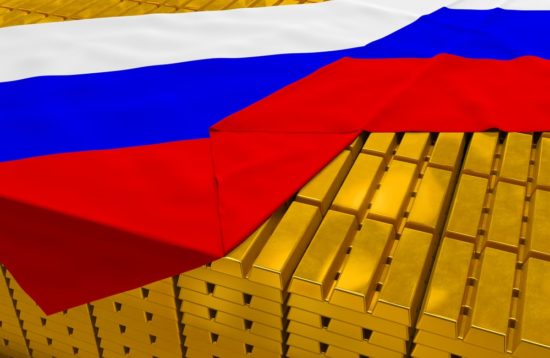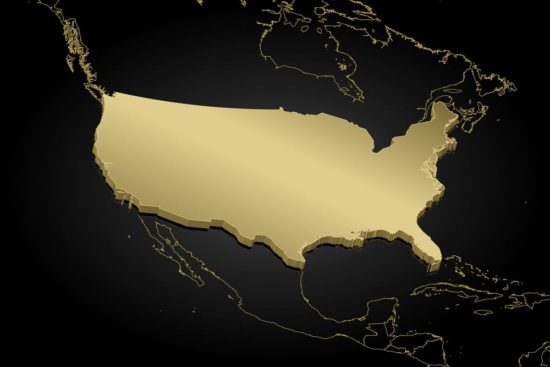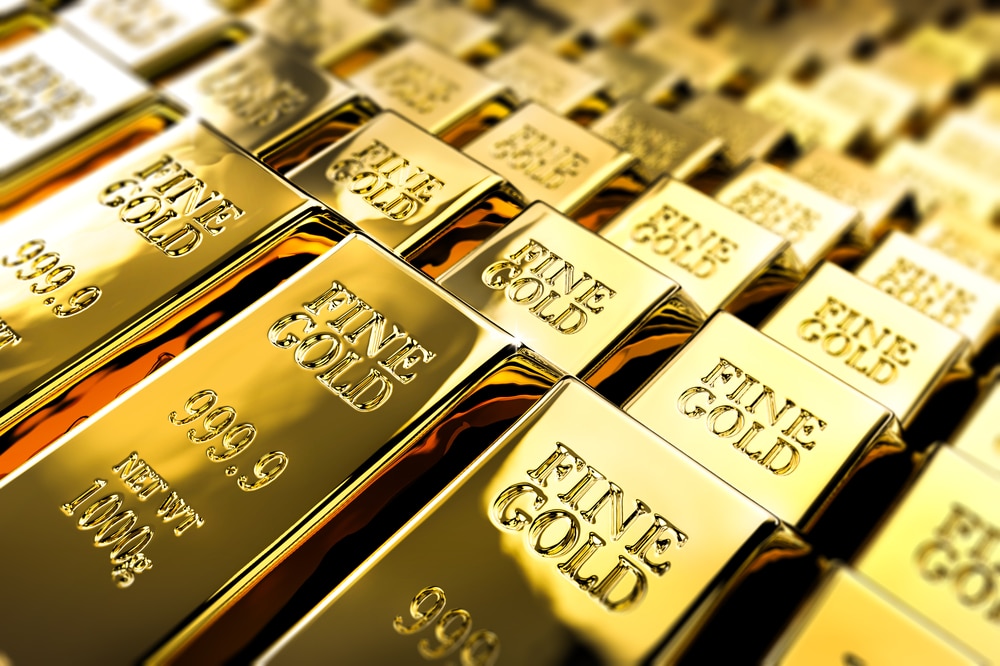Owning physical gold as an individual investor is something that gets counted in ounces. Even full-on “gold bugs,” investors who are really into gold, are likely to own a relatively small amount of the precious metal. At least relative to central banks, which work on an entirely different scale. These giant institutions own tons of gold.
Interestingly, however, a recent survey by the World Gold Council suggests that the reason a central bank owns gold and the reason that an individual owns gold are roughly similar. Of the 22 central banks the Council surveyed, 94% viewed it as a safe haven asset, while 82% thought it was an effective portfolio diversifier. These are two of the biggest reasons why individuals buy gold. Meanwhile, 88% saw it as a universally accepted medium of exchange, even though the world’s fiat currencies have long been disconnected for their gold-linked pasts. That’s pretty much the zombie apocalypse reason for owning gold.
All in all, central bankers seem to like gold for the same reasons that anybody likes gold. That said, who are these giant central banks?
Top Ten Largest Gold Countries of World-
10. India
The second most populous nation on Earth, India sneaks in at No. 10 on the largest gold holding in the world list. It has a little over 590 metric tons of the metal. The country held roughly 360 metric tons of gold between 2000 and 2009, but at the end of that year increased its holdings by more than 50% to around 560 metric tons. Additional gold acquisitions in 2018 pushed the tally to the current figure. Although no reason was given for the purchase, central bank watchers have suggested that it was likely an attempt to offset the impact of U.S. dollar fluctuations.
That said, India is one of the world’s largest consumers of gold, with the country’s residents having a material affinity for the metal. For many years India had restrictions on the import of the metal but scrapped them in 2015. At the time the rule change led to a doubling of the gold imported into the country according to news sources. What’s even more eye-opening is that some industry watchers suggest that India’s residents own 20,000 metric tons of gold - a figure that would dwarf the country’s central bank holding of the metal.
9. The Netherlands
Another small fry on the global stage, the Netherlands comes in at No. 9 on the top-10 gold owner’s list with roughly 610 metric tons of the metal. That’s down by about a third from the 910 or so metric tons at the start of the new millennium. That said, the country has been doing a lot with its gold lately.
In late 2016 the central bank of the Netherlands announced that it was moving gold from the center of Amsterdam to a new location owned by the defense ministry. The goal is to better protect the gold. The new facility, which is expected to receive the gold in 2022, has been dubbed the cash center and will also be used to deal with currency sorting and distribution. This plan follows the country’s decision to bring a material portion of its gold back from foreign locations in 2013. The shifting piles of gold, meanwhile, has spawned interred rumors that, perhaps, the Netherlands doesn’t have accurate records of its gold holdings. That would be unusual but one thing is clear the central bank doesn’t seem to enjoy talking about its gold.
8. Japan
As the world’s third-largest economy, Japan has a surprisingly low rank on the top gold holdings list. The country’s 765 metric tons of gold is only good for an eighth-place showing and is roughly a tenth a size of the U.S. hoard. The country’s gold stores have been basically static at that level for the last decade.
One of the more interesting facts about Japan’s gold reserves is that it contains gold coins that date back to before the Edo era, which started in 1603. Although these coins have been classified as bullion, which is basically a gold coin or ingot of little collectible value, Japan took stock of its older coins in the early part of the new century and brought out examples of its old coinage for display as numismatic (the fancy term for collectible gold coins) specimens. The country says very little about its gold holdings, but with over 400-year-old coins in the mix, it must be an interesting stash.
7. Switzerland
There’s a sizable gap between China and No. 7 Switzerland, which owns roughly 1,040 metric tons of gold. The only larger drop is between the United States and Germany, Nos. 1 and 2 on the list.
Switzerland isn’t one of the top economies in the world. Being a relatively small European nation, that makes sense. However, there’s an interesting gold statistic that comes with a modest population (roughly around 8.4 million people) and a big gold stash. Industry watchers estimate that Switzerland has nearly four ounces of gold for every resident in the country. That’s far and away the largest per capita figure, with top-five gold owners Italy and Germany only coming in with around 1.3 ounces per person. The United States, with over 325 million residents and counting, doesn’t even crack the one ounce per person mark.
Even more interesting when you consider the per capita number is the fact that Switzerland has reduced its gold holdings by 60% since 2000. If you think four ounces per person is a lot of gold, it was even higher at the start of the century.
6. China
As the second-largest global economy, China’s spot all the way down at No. 6 on the top gold holdings list is at first somewhat shocking. That said, the country is still in the process of shifting from a largely rural and agrarian nation to a more modern, urban-centered one. At this point, China owns roughly 1,840 metric tons of gold. That’s up from 395 metric tons in 2000. So, like Russia, it has been adding materially to its holdings over the longer term. The primary reason (rapid economic growth), however, is a bit different. Hong Kong, owned by China, has another 2.1 metric tons, but that’s just a rounding error compared to the holdings in mainland China.
Recent news reports suggest that China has been adding to its gold reserves lately. Locked in a contentious trade battle with the United States, it makes sense that China would be looking to fortify its finances with gold. This move is also likely part of the country’s efforts to shift away from the U.S. dollar as the primary global currency. There’s a long way to go before the dollar loses its supremacy, so there may be more gold acquisitions in the cards for China over the near term.

At the end of June 2020, Russia held $128.5 billion in gold, representing 22.9% of Moscow’s total international reserves
5. Russia
Next on the Top Ten Largest Gold Countries of World list, is Russia with around 2,070 metric tons of gold in a bullion depository. Russia isn’t one of the top-10 global economies according to the IMF, so being in the middle of the top-10 gold holdings list is something of a surprise. That said, the country has been a military and political agitator on the global stage in recent years (it annexed Crimea in 2014 to much global criticism, for example), so having some insulation against financial shocks makes a lot of sense. Note that the country is currently facing strict sanctions related to its actions that have put a material crimp-on the economy.
With that as a backdrop today, it might be interesting to know that Russia’s gold stores fell to a very low 340 metric tons in 2000. Since that point, however, the country’s central bank has fairly steadily added more of the yellow metal to its stash. In fact, over the past year or so, it has increased its holdings of gold by more than 12%. These additions were to push the country up to one spot on this top-10 list. If the trends hold, it also seems likely that Russia is intent on bolstering its gold holdings until there’s some material change on the sanction front.
4. France
Just 15 or so metric tons behind Italy on the top-10 list is France, with about 2,435 metric tons. France is the sixth-largest economy in the world, so its No. 4 ranking is pretty reasonable. However, it had much more gold at the start of the new millennium, when it owned roughly 3,025 metric tons. Since that time, the country has sold around 20% of its gold reserves. That’s a pretty notable change, though the tally has held pretty steady at 2,435 metric tons for the last decade.
France’s central bank, the Banque de France in the capital carries a gold standard at market value, unlike the United States. So first time changes in gold prices have a big impact on the country’s balance sheet. For example, in 2017, the latest year for which data is available, the value of France’s gold holdings fell by $1.26 billion Euros. That’s a lot of money on an absolute basis, but France owns a huge amount of gold. In percentage terms, the drop wasn’t nearly as startling at only about 1.5%. There’s upside potential here as well. If the price of historically volatile gold were to rise materially in valuation France’s central bank would suddenly seem much richer.
One more interesting thing about France’s gold stash is that it keeps it “hidden” within a vault underneath its central bank building. You can’t actually see it in person, of course, but you can learn about the gold if you happen to be lucky enough to visit France during the European Heritage Days event when the bank opens its doors to the public.
3. Italy
The third country with the largest gold holdings is fellow European Italy. Italy clocks in at roughly 2,450 metric tons. That’s just a little above No. 4, but actually below the International Monetary Fund (IMF), which owns about 2,800 metric tons. Since the IMF isn’t a country, however, it didn’t make this list. But not mentioning the IMF here would have been a noteworthy oversight. Interestingly, Italy’s gold stores haven’t budged since the start of the century, unlike N0. 2 Germany’s reserves, which have slowly declined lately.
With just the eighth largest economy in the world, Italy showing up so high on the gold list might be something of a shock. Indeed, the country’s economy is around one-tenth the size of the United States’ economy. However, Italy and gold have a very long history, with mining for the precious metal in the southern European country dating all the way back to the Roman Empire. Note, too, that Italy’s gold reserves plunged to just 22 metric tons during WWII, a low number driven by Nazi Germany’s confiscation of the metal during the war. In the end, getting to a comfortable level of gold ownership and staying there makes a lot of sense for this nation.
2. Germany
There you have it, the No. 2 owner of gold in the world is Germany. The country owns a bit under 3,370 metric tons of gold. What’s notable here is that Germany’s economy is the fourth largest in the world, roughly one-fifth the size of the U.S.’s economy and one-third the size of China’s. Showing up in the second slot on the gold list with their stockpile of gold may seem like Germany is punching above its weight. That’s especially true when you think back to the financial and political turmoil that followed WWII in Europe, notable for that war’s primary aggressor.
Europe’s financial devastation, however, might help to explain the country’s fondness for the metal. Add in the crippling inflation Germany experienced in the 1920s, and you can see where a store of wealth like gold is a key piece of the German Central Bank’s balance sheet. Even in the worst-case scenario, it will have this huge gold horde to fall back on.
Still, it’s worth noting that the country’s holdings of gold are down slightly over the past decade, falling from around 3,410 metric tons at the end of 2008. That’s not a huge change, but the decline has been fairly steady. However, there’s a long way to go before Germany loses its second-place ranking to No. 3 on the list.

Over half of the US Treasury's gold is stored in Fort Knox, Kentucky.
1. The United States
The United States has long sat atop the list of largest gold owners. The size of the country’s economy (it’s the largest in the world) and its long history of financial success make this a less than shocking finding. What is more interesting is that the over 8,100 metric tons of gold bars the United States owns in gold vaults is more than twice the amount of the second-largest holder of gold (no spoilers, you’ll have to wait to find out what European nation claims the No. 2 spot). In other words, the U.S. gold stockpile is far and away the largest, including Fort Knox and the depository in the Federal Reserve Bank of New York in Manhattan. It’s also four times the size of China’s most gold despite the fact that this emerging nation is the second-largest world economy.
There’s one more interesting thing about the U.S. gold stash, it’s carried on the Federal Reserve’s balance sheet with a book value of $11 billion. However, the market value of that gold is closer to $300 billion, according to the central bank. That means that the U.S. government may have a little more of a financial backstop than the official numbers suggest. Not such a bad thing with U.S. debt levels ratcheting swiftly higher following the deep 2007 to 2009 financial downturn according to international organizations.
Conclusion
The United States holds the largest gold reserve at more than 8,000 metric tons, which is twice that of the next leading country, Germany, and three times that of Italy and France. If valued at a conservative $1,300 per ounce, these reserves are theoretically worth more than $375 billion U.S. dollars. These reserves were a significant portion of the country’s roughly $850 billion monetary base in August 2008, but since then, it has become a smaller portion of the $4.9 trillion monetary base in 2020.
These gold reserves accounted for about 79% of the Federal Reserve’s holdings as of September 2020, which means that it seems to prefer gold over a basket of currencies, foreign reserves, and foreign sovereign debt like many other countries. By comparison, China holds less than 4 percent of its reserve holdings in gold and a majority in U.S. government bonds that it acquires through a long-running trade deficit amounting to trillions of dollars.
While the U.S. holds the largest gold reserves, other countries are adding to their reserves at a faster rate or have access to domestic gold sources. For example, China ranks relatively low on the list of gold reserves, but it is mining more new gold than any other country. Similarly, Australia has just 280 metric tons in its reserves, but it houses the largest gold mine reserves in the world along with the third-largest gold producer.
In recent decades, more and more central banks have sold large portions of their gold holdings. While around 60% of all currency reserves were invested in gold in 1960, today they are less than 10%. As a result of the massively increased price of gold over the past few years, inventories have also risen in value - which in turn has led to the gradual sale of further reserves without reducing the monetary value of the reserves.




